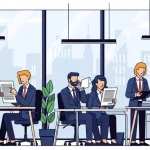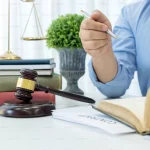What Could I Recover in a Slip & Fall Case?
Slip and fall accidents are common and can happen to anyone, anywhere. Whether it occurs in a grocery store, on a sidewalk, or at a friend's house, these incidents can lead to significant injuries and financial burdens. Understanding what you could potentially recover in a slip and fall case is crucial for anyone who has experienced such an accident. This article aims to provide a comprehensive guide on the types of damages you can recover, the factors that influence the recovery amount, and special considerations to keep in mind.
Types of Damages Recoverable
Economic Damages
Economic damages are quantifiable financial losses that you incur as a result of the slip and fall accident. These damages are often easier to calculate and prove compared to non-economic damages.
Medical Expenses
One of the most immediate concerns after a slip and fall accident is the cost of medical treatment. Medical expenses can include a wide range of costs such as emergency room visits, hospital stays, surgeries, and medication. Future medical expenses are also considered, especially if the injuries require ongoing treatment or rehabilitation.
Lost Wages
If your injuries prevent you from working, you may be entitled to recover lost wages. This includes not only the income you have already lost but also any future earnings you might miss out on due to the accident. Calculating lost wages involves documenting your salary, hours missed, and any potential future earnings that are affected.
Property Damage
In some cases, personal property may be damaged during the fall. Property damage can include items like smartphones, glasses, or clothing. The cost of repairing or replacing these items can be included in your economic damages.
Non-Economic Damages
Non-economic damages are more subjective and can be harder to quantify. These damages compensate for the intangible losses you suffer as a result of the accident.
Pain and Suffering
Pain and suffering refer to the physical pain and emotional distress you experience due to your injuries. This can include chronic pain, discomfort, and any emotional trauma such as anxiety or depression resulting from the accident.
Loss of Enjoyment of Life
If your injuries impact your ability to enjoy daily activities or hobbies, you may be entitled to compensation for loss of enjoyment of life. This considers how the accident has affected your overall quality of life and ability to engage in activities you once enjoyed.
Loss of Consortium
Loss of consortium refers to the impact of your injuries on your relationships with family members, particularly your spouse. This can include loss of companionship, affection, and sexual relations.
Factors Influencing Recovery Amount
Severity of Injuries
The severity of your injuries plays a significant role in determining the amount of compensation you can recover. Minor injuries may result in lower compensation, while severe or long-term injuries can lead to higher settlements or awards. The extent of medical treatment required and the long-term effects of the injuries are crucial factors in this assessment.
Liability and Negligence
Proving liability and negligence is essential for recovering damages in a slip and fall case. You must demonstrate that the property owner was negligent and that their negligence directly caused your injuries. In some cases, comparative fault may come into play, where your own actions are considered in determining the final compensation amount.
Documentation and Evidence
The importance of documentation and evidence cannot be overstated in a slip and fall case. Medical records, photographs of the accident scene, witness statements, and surveillance footage can all serve as crucial evidence to support your claim. Proper documentation helps establish the extent of your injuries and the circumstances surrounding the accident, making it easier to prove negligence and calculate damages.
Special Considerations
Premises Liability
Premises liability refers to the legal responsibility of property owners to maintain a safe environment for visitors. If you slip and fall on someone else's property, you may be able to hold the owner accountable under premises liability laws. This can include a variety of scenarios such as wet floors, uneven surfaces, or inadequate lighting. Understanding the nuances of premises liability is essential for building a strong case.
Statute of Limitations
The statute of limitations is the timeframe within which you must file a claim. This period varies by state and the specifics of the case. Failing to file within the statute of limitations can result in losing your right to seek compensation. However, there are exceptions to this rule, such as when the injured party is a minor or if the injury was not discovered immediately.
Settlements vs. Trials
When pursuing a slip and fall case, you may have the option to settle out of court or go to trial. Settlements are often quicker and less stressful, providing you with compensation without the uncertainties of a courtroom battle. However, trials can sometimes result in higher awards, especially if the evidence strongly supports your case. Understanding the pros and cons of each option can help you make an informed decision.
Case Study: Slip & Fall in a Grocery Store
Consider a scenario where you experience an accident at Kroger. In such a case, you could potentially recover various types of damages. Economic damages might include medical bills for immediate treatment and ongoing physical therapy, as well as lost wages if you are unable to work. Non-economic damages could cover pain and suffering due to the injuries and loss of enjoyment of life if you can no longer participate in activities you once enjoyed. The amount you can recover will depend on the severity of your injuries, the quality of your documentation, and the ability to prove negligence on the part of the store.
Conclusion
In conclusion, understanding what you could recover in a slip and fall case involves recognizing the types of damages available, the factors that influence the recovery amount, and the special considerations that may apply. Economic damages like medical expenses and lost wages are easier to quantify, while non-economic damages such as pain and suffering require a more subjective assessment. The severity of your injuries, ability to prove negligence, and quality of evidence all play crucial roles in determining the final compensation. By being well-informed, you can better navigate the complexities of a slip and fall case and pursue the compensation you deserve.
More to Read:
Previous Posts:







